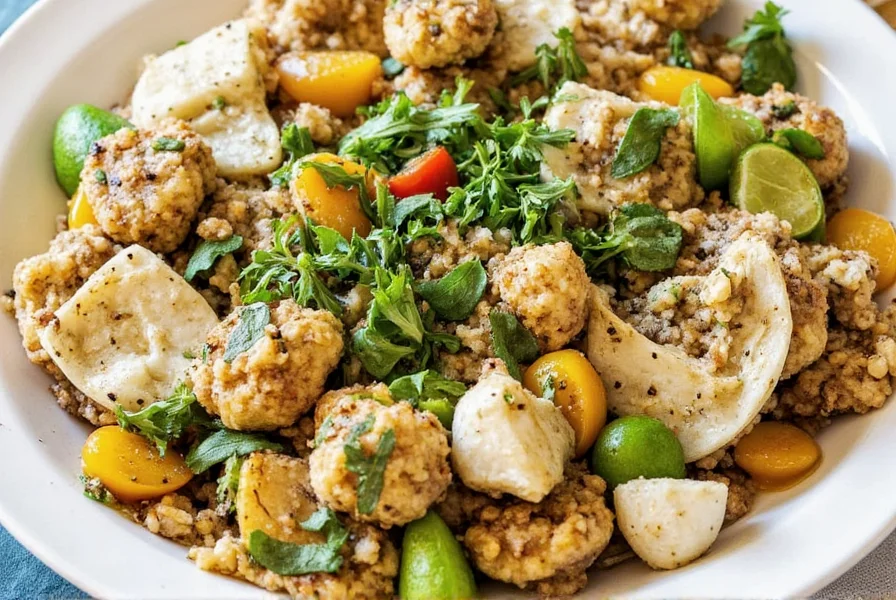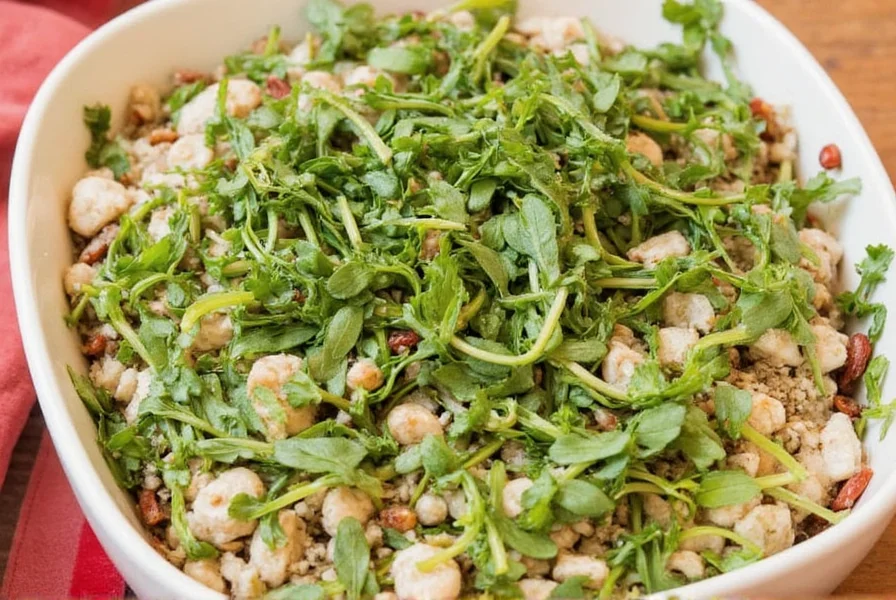Oregano Overload: 7 Sizzling Ways to Spice Up Your Mediterranean Dishes
If you’ve ever bitten into a slice of authentic Italian pizza or savored a Greek moussaka, chances are you’ve tasted the bold, earthy punch of Mediterranean oregano. This humble herb may seem like just another pantry staple, but in reality, it’s one of the most transformative ingredients in global cuisine — especially across the sun-drenched countries of Southern Europe.
In this article, we’ll explore why Mediterranean oregano deserves a starring role in your spice rack, how it differs from other varieties, and — most importantly — how you can use it to elevate your everyday meals. Whether you're a seasoned chef or a curious home cook, prepare for an aromatic adventure that spans continents and centuries.
Table of Contents
- What Is Mediterranean Oregano?
- Why It Matters in Global Cuisine
- Oregano vs. The World: How It Stacks Up
- Top 7 Tips for Using Mediterranean Oregano Like a Pro
- Buying Guide: Choosing the Best Oregano
- FAQs: All Your Oregano Questions Answered
- Conclusion: Let Oregano Rule Your Kitchen
What Is Mediterranean Oregano?
Origanum vulgare, more commonly known as Mediterranean oregano, is a perennial herb native to the warm climates of Southern Europe and the Middle East. Unlike its milder cousins found in North American blends, true Mediterranean oregano packs a robust flavor profile that’s peppery, slightly bitter, and intensely aromatic.
This herb has been used for thousands of years — not just for flavor, but also for medicinal purposes by ancient Greeks and Romans. Today, it remains a cornerstone of Mediterranean cooking, lending depth and warmth to everything from grilled meats to rustic stews.

Why It Matters in Global Cuisine
Mediterranean oregano isn’t just about taste — it’s part of a cultural legacy. Here’s how different regions celebrate this versatile herb:
| Region | Signature Use | Flavor Contribution |
|---|---|---|
| Greece | Lemon-oregano chicken, Greek salads | Adds brightness and earthiness |
| Italy | Pizza Margherita, tomato sauces | Complements sweetness of tomatoes |
| Turkey | Kebabs, flatbreads | Enhances smoky flavors |
| Mexico (imported tradition) | Refried beans, chorizo | Deepens savory notes |
Oregano vs. The World: How It Stacks Up
Not all oreganos are created equal. Below is a quick comparison to help you understand what makes Mediterranean oregano stand out from the crowd:
| Type | Origin | Flavor Profile | Best For |
|---|---|---|---|
| Mediterranean (True Oregano) | Southern Europe | Strong, spicy, herbal | Pizza, pasta, grilled meats |
| Mexican Oregano | Mexico, Central America | Earthy, citrusy, mild | Tacos, chili, moles |
| Cuban Oregano | Caribbean | Bold, camphor-like | Stews, rice dishes |
| Marjoram | Mediterranean | Sweet, delicate | Vegetable dishes, soups |

Top 7 Tips for Using Mediterranean Oregano Like a Pro
- Dry It First: Fresh Mediterranean oregano is potent, but drying intensifies its flavor. Crush dried leaves before using to release essential oils.
- Add Late When Cooking: To preserve aroma, add dried oregano toward the end of cooking — unlike some herbs that benefit from long simmering.
- Infuse Olive Oil: Make your own oregano-infused olive oil by steeping dried leaves in warm oil. Perfect for drizzling over bread or pizza.
- Pair with Citrus: Lemon juice balances oregano’s intensity beautifully — try it in dressings or marinades.
- Use Sparingly: A little goes a long way. Start with a pinch and adjust to taste.
- Combine with Garlic: Classic combo alert! Mediterranean oregano + garlic = magic. Try them in roasted vegetables or meat rubs.
- Grill It: Toss fresh sprigs onto the grill alongside veggies or meats. The heat releases a smoky, herby aroma that’s irresistible.
Buying Guide: Choosing the Best Mediterranean Oregano
Shopping for Mediterranean oregano can be overwhelming, especially when faced with so many options. Here’s a breakdown of what to look for and where to find quality products:
Types Available
- Fresh Oregano: Found in bunches at farmers' markets or supermarkets. Ideal for garnishing or short cooking times.
- Dried Leaves: Most common form. Look for vibrant green color and strong aroma.
- Ground Oregano: More convenient but less fragrant than whole leaves. Best for seasoning blends.
- Freeze-Dried Oregano: Retains flavor better than regular dried; pricier but lasts longer.
Key Features to Consider
| Feature | Description |
|---|---|
| Aroma | Should smell fresh and pungent. Avoid musty or dusty smells. |
| Color | Bright green indicates freshness. Brownish hues mean old stock. |
| Packaging | Choose airtight containers to maintain potency. |
| Country of Origin | Look for labels like “Greek” or “Italian” for authenticity. |
Recommended Products
- Nikos’ Natural Greek Oregano
- Features: Hand-harvested from Crete, no additives.
- Advantages: Strongest flavor among supermarket brands.
- Best For: Authentic Mediterranean recipes.
- Occasion: Family dinners, date night cooking.
- Spice Garden Organic Dried Oregano
- Features: USDA Organic certified, sustainably grown.
- Advantages: Great balance of price and quality.
- Best For: Everyday cooking and baking.
- Occasion: Weeknight meals, meal prepping.
- OliveNation Mediterranean Oregano Blend
- Features: Mix of oregano, marjoram, thyme.
- Advantages: Ready-to-use for a complex flavor base.
- Best For: Sauces, casseroles, marinades.
- Occasion: Batch cooking, lazy Sundays.
FAQs: All Your Oregano Questions Answered
Can I substitute Mexican oregano for Mediterranean oregano?
You can, but keep in mind the flavor difference. Mexican oregano is milder and has hints of citrus and licorice, so it won't give you the same intense herbal kick.
Is fresh oregano better than dried?
It depends on the recipe. Fresh works best for bright, herb-forward dishes (like salsas), while dried oregano delivers deeper, more concentrated flavor in cooked dishes.
How should I store oregano?
Store dried oregano in a cool, dark place in an airtight container. Fresh oregano can be kept in a jar of water on the counter or wrapped in a damp paper towel in the fridge for up to a week.
Can I grow my own Mediterranean oregano?
Absolutely! Oregano thrives in sunny spots with well-drained soil. It's low maintenance and perfect for windowsill gardens or outdoor planters.
Conclusion: Let Oregano Rule Your Kitchen
Whether you’re roasting lamb, tossing a salad, or whipping up a batch of homemade pesto, Mediterranean oregano adds a layer of complexity that turns good food into unforgettable fare. Its versatility, bold flavor, and deep-rooted cultural significance make it a must-have in any spice cabinet.
Now that you’re armed with the knowledge of how to select, store, and use Mediterranean oregano effectively, go ahead and experiment. Add a pinch to your next vinaigrette, crush some into a marinade, or sprinkle liberally over freshly baked focaccia. Let this ancient herb bring modern magic to your meals.










 浙公网安备
33010002000092号
浙公网安备
33010002000092号 浙B2-20120091-4
浙B2-20120091-4